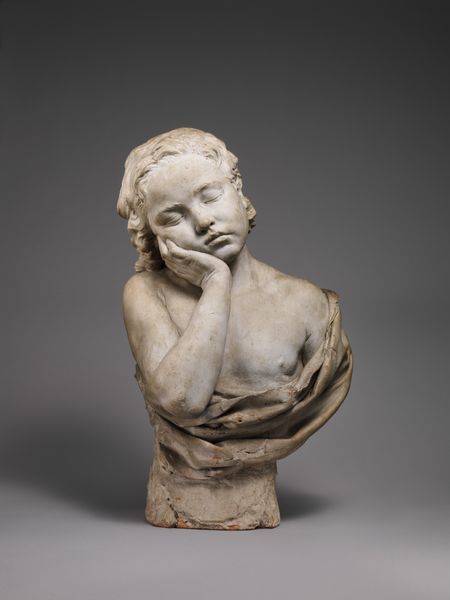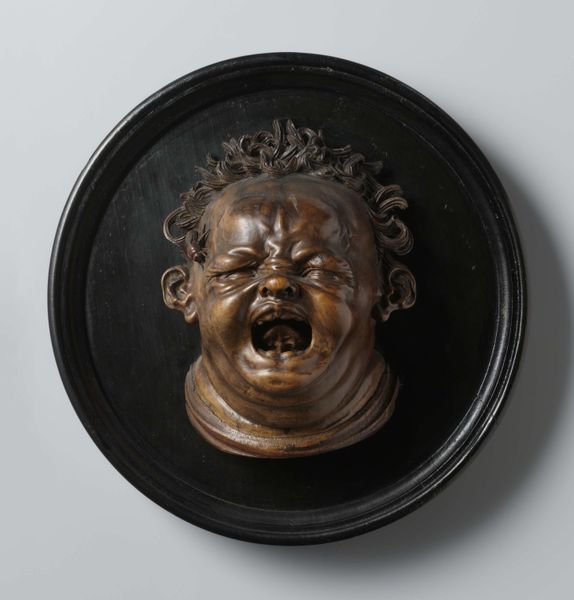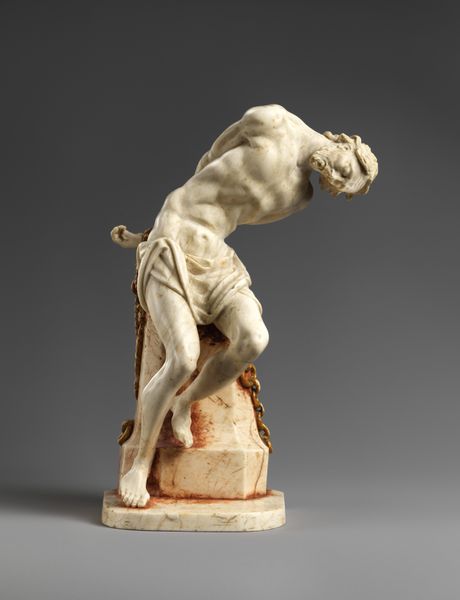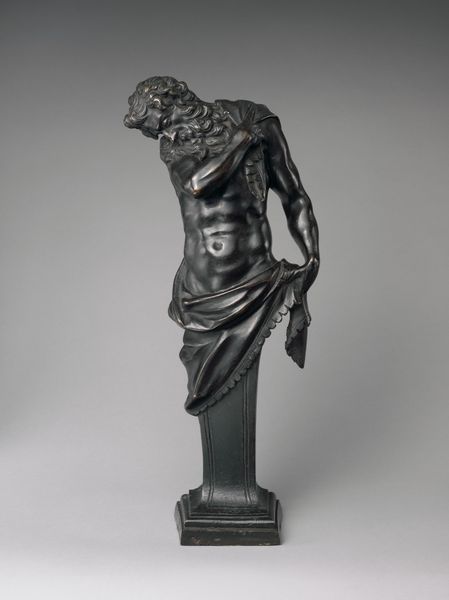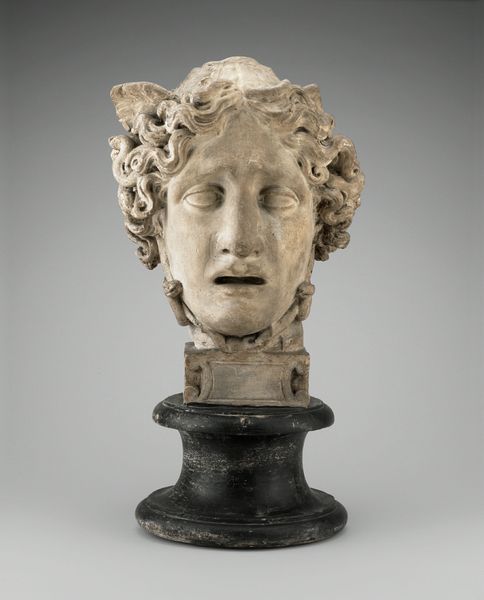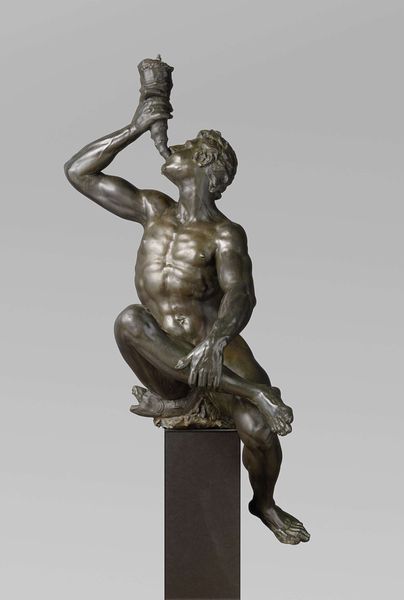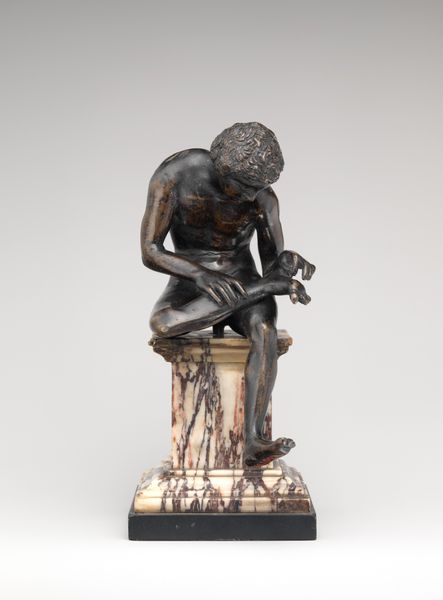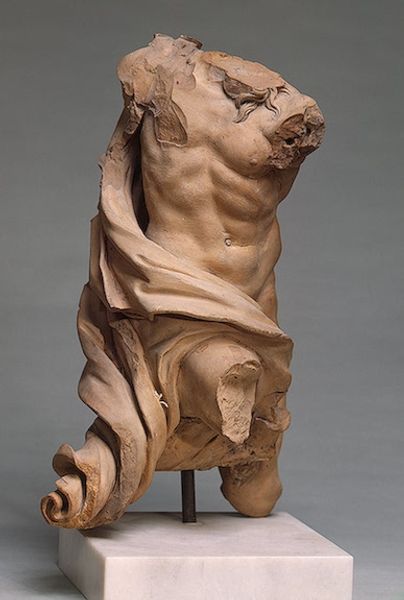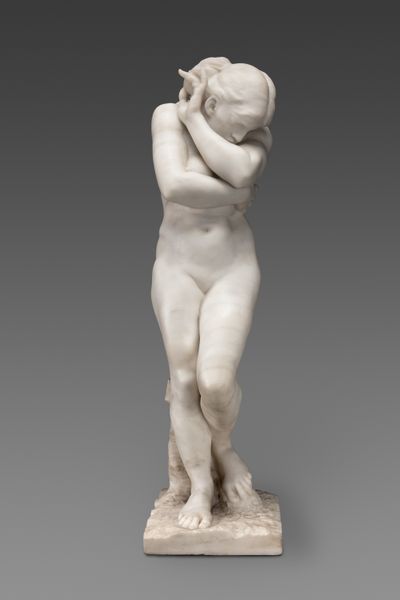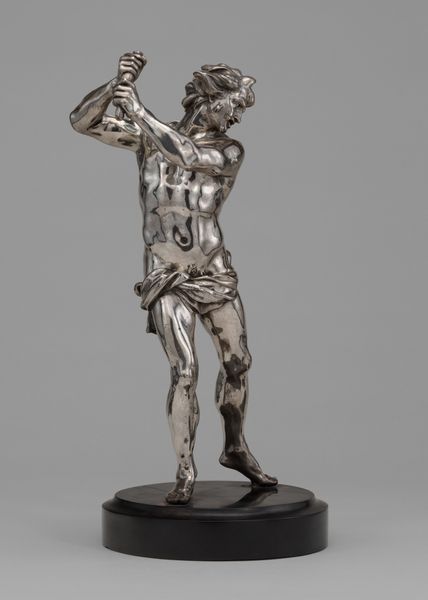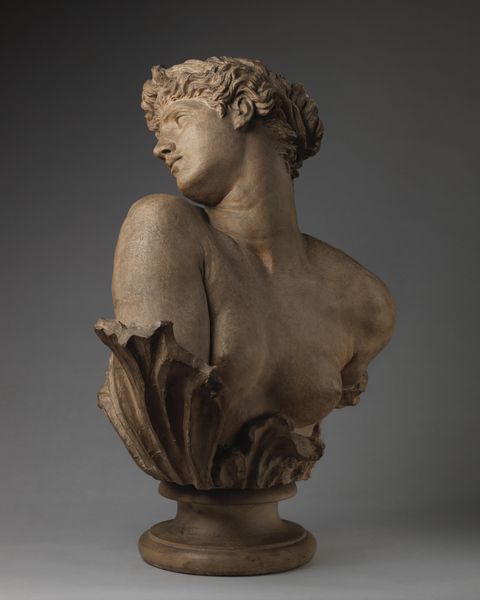
sculpture, marble
#
portrait
#
baroque
#
sculpture
#
figuration
#
sculpture
#
history-painting
#
decorative-art
#
marble
Dimensions: confirmed: 27 × 17 3/8 × 11 1/8 in., 133.8 lb. (68.6 × 44.1 × 28.3 cm, 60.7 kg) socle, confirmed: 6 1/4 in. (15.9 cm) yellow marble display column (wt confirmed): 644 lb. (295.7 kg)
Copyright: Public Domain
Editor: Here we have Balthasar Permoser's marble sculpture, *Marsyas*, carved sometime between 1675 and 1690. The raw emotion captured is incredible. The figure is screaming in agony! What symbols or hidden narratives are at play here? Curator: Indeed, it's a visceral piece. The immediate symbol, of course, is the figure of Marsyas himself, flayed alive by Apollo. The enduring resonance stems from the imagery's ties to human suffering and divine authority. Do you see the averted gaze and contorted face? These reflect not only physical pain, but a deeper psychological torment. The scream is, in effect, a cultural echo— think about how that kind of depiction manifests across eras. Editor: So, it is not just the pain of the flaying, but something more existential? A defiance maybe? Curator: Precisely! It speaks to the enduring human struggle against power and injustice. Marsyas, as a satyr, represents raw, untamed emotion, contrasting sharply with Apollo's rationality and order. Permoser’s choice to sculpt this subject suggests a commentary on the tension between reason and passion, control and chaos, ideas very much circulating in the Baroque era. How might contemporary audiences interpret this conflict? Editor: It makes me think about the power dynamics in society today. The artist seems to capture a timeless struggle. Curator: Exactly. And in that sense, the screaming figure transcends its immediate mythological context. The cultural memory embedded in this image continues to speak. Editor: This gives me a new way to think about art's role in both reflecting and shaping culture. Thanks!
Comments
No comments
Be the first to comment and join the conversation on the ultimate creative platform.
